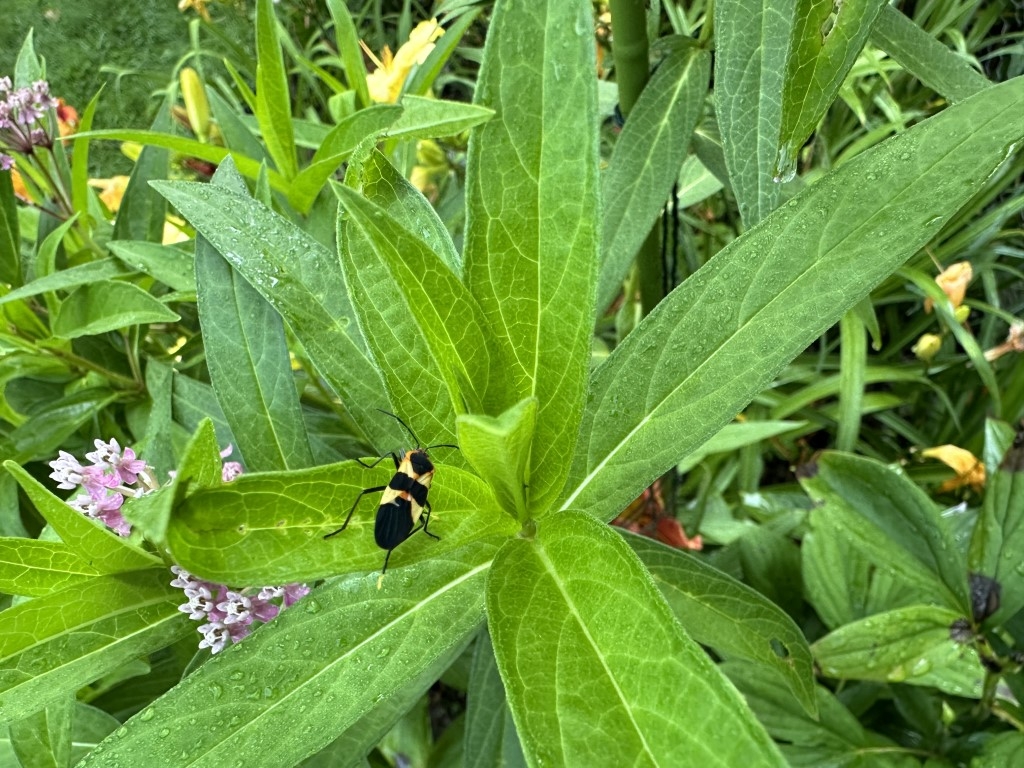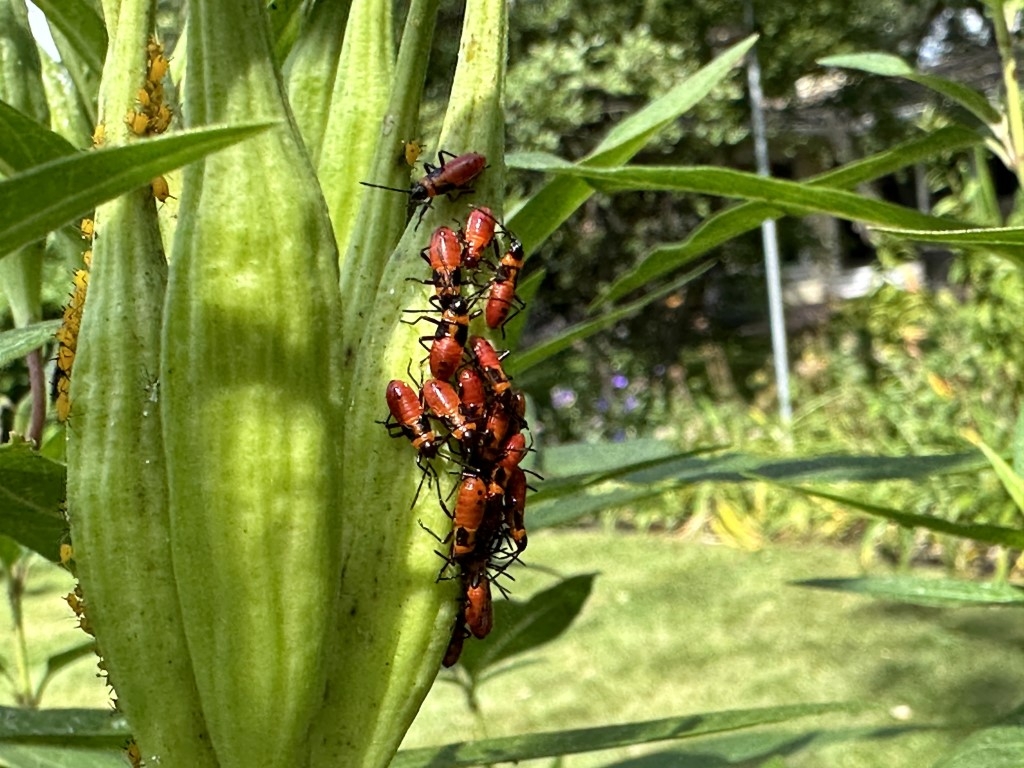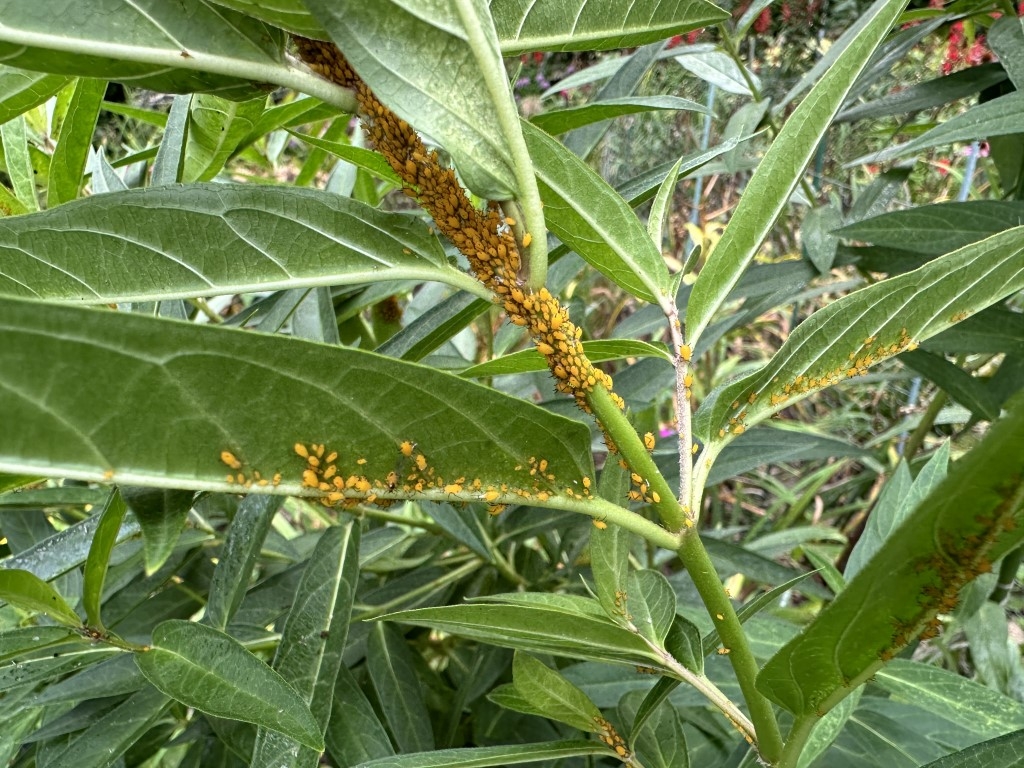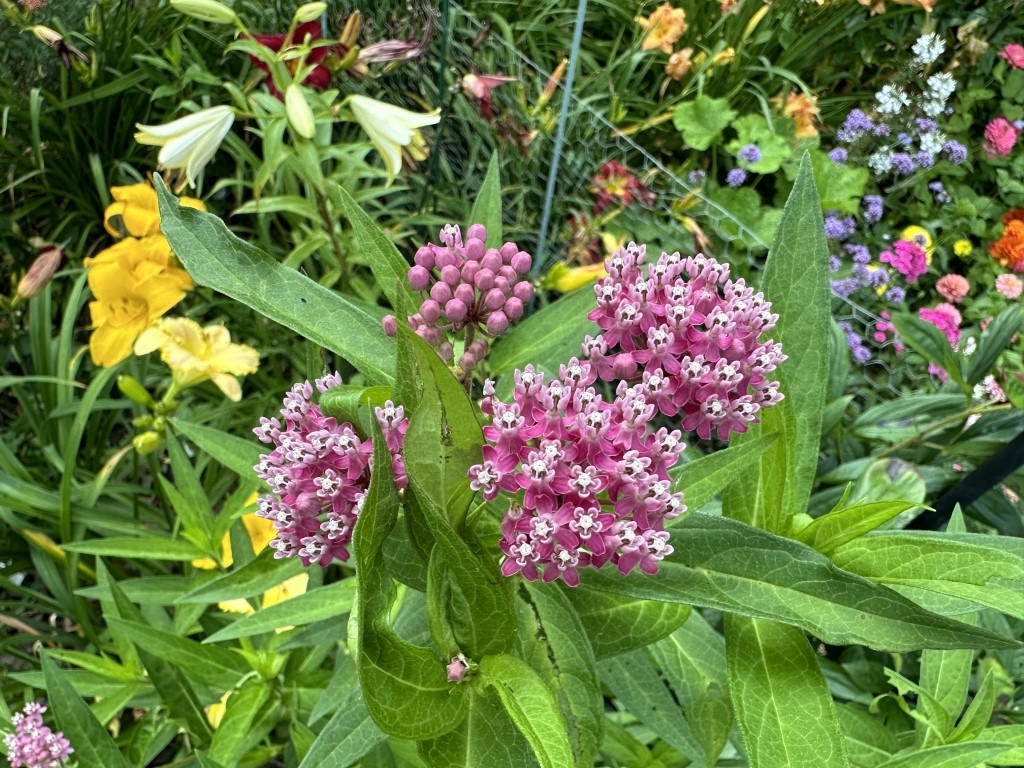I planted a swamp milkweed this spring hoping to encourage a monarch butterfly to lay some eggs on it. Instead I got a science experiment.
First a large milkweed bug showed up to check out the new digs.

Then one day in the not-so-distant future, there were milkweed bug nymphs everywhere.

They feed on milkweed seeds and are usually found hanging on the pods. Their job is to eat the seeds so milkweed plants don’t spread too much and become a nuisance. Fine with me!
But then the oleander aphids showed up in a giant army. Eventually they covered just about every stem and branch of my plant.

The aphids eat plant sap and in manageable numbers cause mostly cosmetic damage. But this was a banner year for them. I belong to several local garden groups on Facebook, and I saw scores of photos with oleander aphids covering people’s milkweed plants this summer.
As they ingest the sap they produce honeydew which can develop sooty mold. Then the plant can become stunted or develop deformities.

It would’ve been rather pointless of me to spray chemicals on the plant to get rid of the aphids because it would also kill any monarch butterfly eggs—the whole purpose of planting swamp milkweed in the first place! I was prepared to live and let live.
I kept an eye out for any ladybugs (an aphid predator) but never saw any.
Eventually there were just too many aphids. The plant started to turn black and dry up, and I couldn’t stand by and watch any longer.
First I tried to spray the stems with a strong burst of hose water, but they didn’t budge. Then I put on a glove and massaged the stems as I blasted them with water (blechhh by the way). I still only removed about a quarter. They were hanging on tight!
Finally I resorted to an organic spray. That finally reduced their numbers enough where I felt the plant could fend for itself.

Swamp milkweed grows 4 to 5 feet tall. It’s a wetland plant that thrives in moist soil, so my biggest concern was keeping my new plant watered. Thankfully mother nature dumped inches upon inches of rain on us in May and June, so I didn’t have to do any watering until a dry spell in August.
I just wasn’t adequately prepared for all the bugs that would show up to enjoy my new plant!
